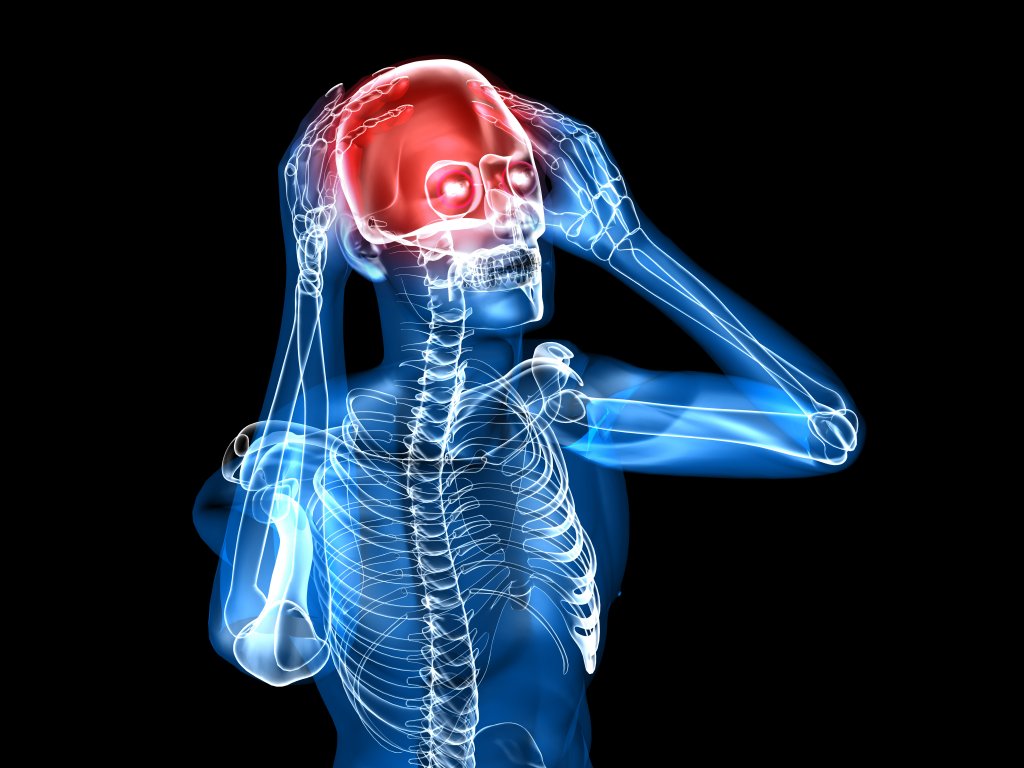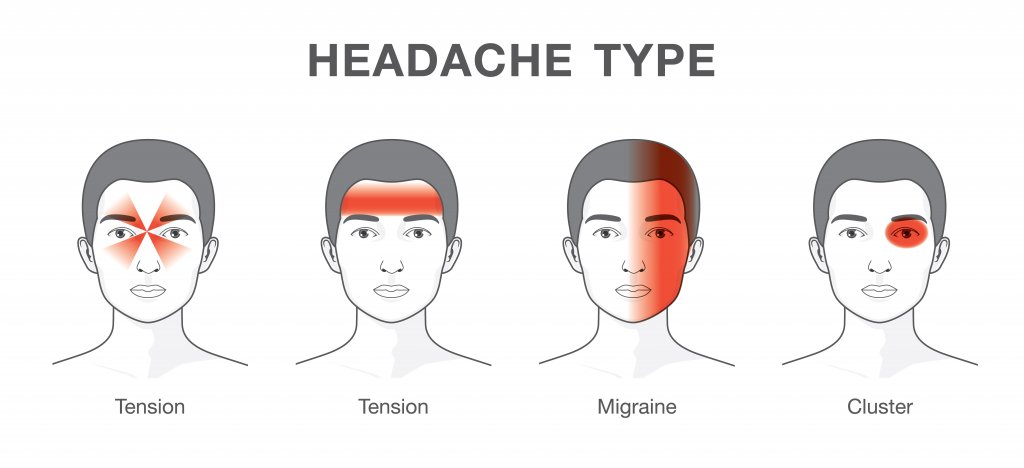Headaches are an altogether pedestrian medical condition. Everyone has had them at some point in their lives, that is just basic fact. However, in spite of the fact that they are so common, headaches are actually far more complicated than most people think.
As far as we know, there are at least 150 different kinds of headaches. Each of these can be differentiated through their own unique set of symptoms. They can also be caused by a wide range of different factors. Because of this, it also comes as no surprise that the treatment for headaches can sometimes vary as well.
That being said, differentiating between these kinds of headaches can prove to be quite a challenge. This article seeks to help readers with that particular predicament. It describes some of the most common headache types in detail. It also provides a general discussion of the possible causes of these headaches.
Table of Contents
Common Causes of Headaches
The sensation of pain that a person feels during headaches typically come as a result of your nerves sending signals to your brain regarding the state of your blood vessels. This is a pretty basic overview of how the nervous system works. This is important as pain serves as one of the ways for your body to communicate problems in its systems. That is why, in some cases, these headaches only serve as part of an even larger problem whether they are genetic, physiological, emotional, or psychological.
That being said, there is a wide range of factors that can cause headaches. For instance, the most obvious one would be illnesses. Various forms of infection, sinusitis, the common cold, or even fever could easily lead to a sharp and painful headache. Throat infections, inflamed sinuses, and ear infections are also listed as common headache-causing illnesses. At the same time, these headaches can also serve as warning signs for more serious medical problems. For instance, tumors and cancers in the brain are certainly not unheard of.
In addition to this, multiple studies have shown that undue stress can also easily lead to the onset of headaches for most people. For some people, physical stress serves as the main trigger for the headache episodes. This includes overexertion due to too much exercise as well as eyestrain due to overexposure to blue light.
Of course, this is not to say that psychological and mental stress does not play a role in causing these episodes. Quite the opposite, actually, in fact, it has been found that times of emotional distress and depression usually come with recurring headaches as well. It is also worth noting that some of the secondary symptoms of these psychological problems also contribute to the onset of headaches. In particular, things like consuming too much alcohol, medicinal abuse, skipping of meals, as well as irregular sleeping patterns can trigger attacks.
It is also undeniable that environmental factors need to be taken into consideration. Stimuli like abrupt weather changes, second hand tobacco smoke, strong chemical smells, and pungent perfumes have been shown to elicit feelings of dizziness and headaches for some. At the same time, allergens can also contribute directly, specifically when we speak of sinus headaches.
Finally, there are also genetic factors that need to be mentioned when we speak of headaches. For instance, migraine headaches have been shown to run in families as no less than 90% of children and teens suffering from migraines also have family members suffering from that same condition. In fact, it has been shown that a child is 70% more likely to have migraines if both of the parents have a history of the said condition.
Needless to say, you will need to be properly diagnosed by a physician in order to truly understand your condition and the causes of one’s headaches. However, having a rudimentary understanding of it certainly never hurts.
Common Headache Types
Now that we have presented an overview of the several factors which can trigger the distinct types of headaches, it is time that we examine the actual categories themselves. This should serve as a handy guide for readers looking to understand how these conditions manifest themselves physically. Pay close attention and take note of the differences. That being said, just be sure to check with your physician as well in order to get the proper diagnosis.
Tension Headaches
The first category that we need to look into is the tension-type headache. It is considered to be the most common type of headache among the adults and teens; with women being more likely to suffer from it. According to different studies, no less than 3 percent of the American population suffer from tension headaches.
The intensity of the pain ranges from mild to intense. The pain itself is typically centered on the area of the person’s head and neck as well as the area behind the eyes. Similar to migraines, it is also characterized by a throbbing sensation on both sides of the head. Some patients characterize the feeling as comparable to having a tight band placed around one’s forehead.
It should be noted here that tension headaches are brought about primarily by the muscle contractions in the person’s head and neck. For most people, these attacks are episodic in nature. On average, these episodes occur about once or twice a month. However, there are also cases wherein these headaches become chronic.
Ibuprofen and aspirin is probably the most effective way to deal with these tension headaches. However, it should be stated here that patients should take extra care to not abuse these medications as this could lead to serious consequences. Instead, they should be used sparingly and only when needed.
Cluster Headaches
This particular type of headache is characterized by an intense and piercing pain around the patient’s eye. The pain can either be throbbing or constant. While it is the least common type of headache, it is also known as the most severe of them all. This particular type of headache earned its name due to the fact that it usually occurs in groups.
Patients would suffer attacks up to three times a day during a cluster period. Take note that these can last for as long as 2 weeks to 3 months. After that, the headaches could go away completely and go into remission for extended periods of time. In some cases, it could even take months or years before the headaches start again.
Every headache episode typically lasts 15 minutes to 3 hours. The pain could be so intense that it often rouses the patient from slumber. To give you a better idea of just how bad it can be, as the pain sets in, the patient’s eyelid will often droop and their eye would redden as it starts tearing up. All the while, the pupil will contract and get smaller. At the same time, the nostril on would become stuffy. Keep in mind that all of these symptoms would manifest only one side of the face.
It is worth mentioning here that cluster headaches affect both men and women. However, men have been shown to be far more susceptible to it. Unlike other types of headaches, cluster headaches do not have specific triggers. However, medical professionals would dissuade patients from consuming alcohol during cluster periods as this could induce a head-splitting headache.
Sinus headaches
Sinus headaches can be characterized by the deep and constant pain on the patient’s forehead, cheekbones, and on the bridge of their nose. As the name suggests, this particular headache category is closely related to the cavities in your head, called sinuses.
When your sinuses become irritated and inflamed, they are unable to get rid of the excess mucus. This leads to the build up of pressure in the cavities which give way to the painful sensations. Typically, this type of headache also comes with a range of other sinus-related symptoms. This would include facial swelling, a runny nose, as well as a feeling of fullness in the ears. Of course, for more advanced cases, patients would also suffer from a fever that is typical of sinusitis.
Migraines
For most patients, migraines can start as early as one’s childhood years. Of course, there are also cases wherein the headaches do not start until the person has reached adolescence or early adulthood. Regardless, these migraines are characterized by intense, debilitating and throbbing headaches. For most people, the pain would become so strong that they become unable to function properly. Take note that these attacks can last from as short as 4 hours to as long as 3 whole days. They can also occur several times a month.
There are also warning symptoms, commonly known as aura, which may manifest prior to the headache itself. These can include anything from blind spots, flashes of light, or a tingling sensation on one side of the person’s face. This may vary between patients as some people do not experience it at all.
In addition to the actual headache, patients also sometimes suffer from secondary symptoms such as hypersensitivity to noise, light, and smells. Some people would also start feeling nauseous leading to the loss of appetite and vomiting. Belly pain and an upset stomach can also inadvertently stem from these headaches.
This article presented readers with an overview of the different types of headaches as well as some of the factors which can cause them. In terms of treatment, there are specific medications which can be prescribed to you that will help reduce the frequency of these headaches and lessen their intensity. Of course, the best course of action would be to talk to your doctor about the different treatment options available to you. Most patients find that a combination of medicines, home remedies, and general adjustments to one’s lifestyle help address this problem.




























